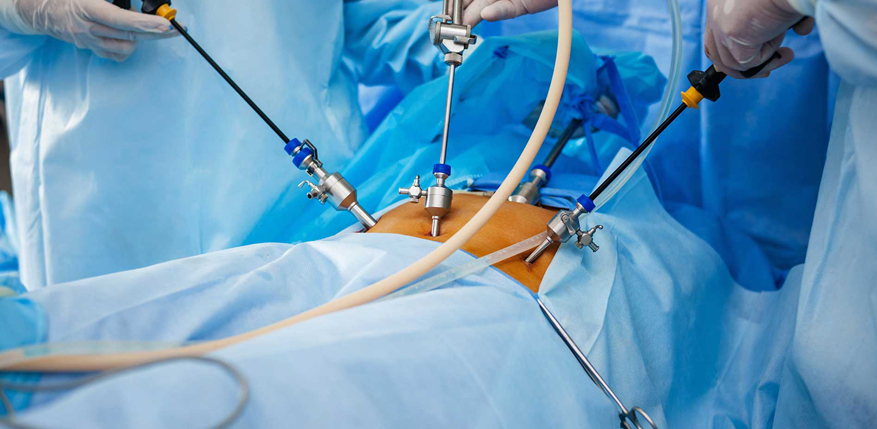Total Laparoscopic Hysterectomy
The total laparoscopic hysterectomy (TLH) offers women an option that is far less invasive than other surgical approaches. The need for a hysterectomy is an important and difficult decision.
The surgical removal of the uterus can be lifesaving for those suffering from gynecological cancers or the severe pain and heavy bleeding due to fibroids or endometriosis.
Today, there are several surgical approaches that are far less invasive than a total abdominal hysterectomy, which is still widely performed. Using a laparoscope — a slender, fiber-optic tube equipped with a miniature camera, lights and surgical instruments — surgeons have the ability to see inside the abdomen and technical access to the uterus, ovaries and fallopian tubes without having to make a large incision.
In the past few years, many gynecologists have performed a portion of the hysterectomy using a laparoscope. Called a laparoscopically assisted vaginal hysterectomy (LAVH), the procedure requires an incision deep within the vagina, through which the uterus and related organs are removed. The LAVH still involved a transvaginal approach and decreased healing time, similar to a total vaginal hysterectomy.
With advanced laparoscopic skills, gynecological surgeons are able to perform TLH. The surgery is completed utilizing only four tiny abdominal incisions less than one-quarter to one half an inch in length. Even a large uterus can be removed laparoscopically using this technique. A traditional open hysterectomy requires an abdominal incision of four to eight inches.
Post surgically, patients have a much quicker recovery, usually going home the same day or stay one overnight in the hospital. Often, patients are able to return to their normal routine in one to two weeks. Patients report less pain, minimal post-surgical narcotic pain medication use, and a faster recovery time than women undergoing abdominal hysterectomies who usually require a three to four day hospitalization and lengthy recovery time of usually six to eight weeks.
The majority of hysterectomies are performed for benign tumors or conditions that allows women a choice of a variety of alternative treatments for fibroids, endometriosis and uterine prolapse.

